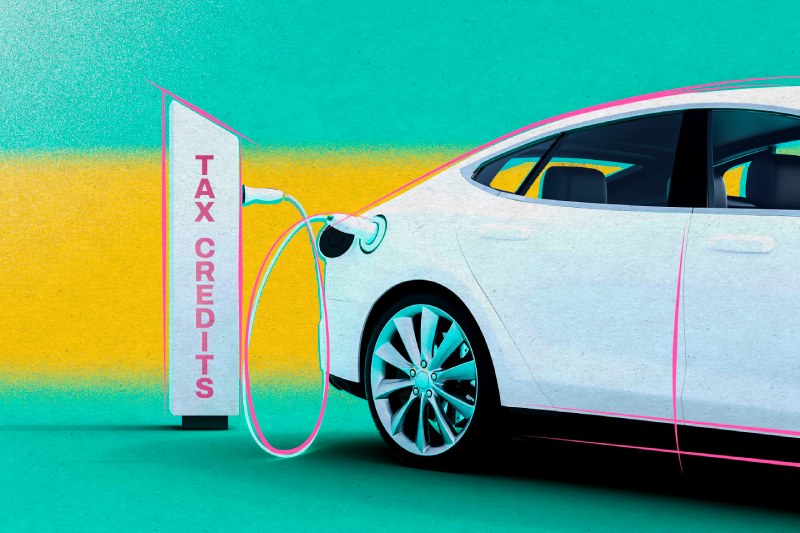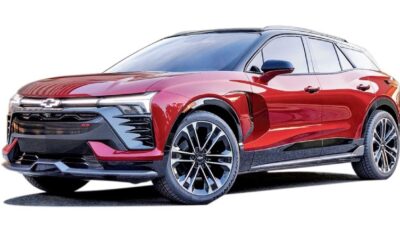Business
How do you apply for the EV tax credit? Are You Eligible for the $7,500 Tax Break Under the 2023 EV Tax Credit?

Here’s how to check if you qualify for the clean vehicle tax credit if you purchased an electric vehicle in 2023. You’re running out of time to buy an electric car this year, but you can still claim the credit when you file your taxes in 2024 if the $7,500 EV tax credit is what’s encouraging you. But if you’re still debating your options and won’t buy until 2024, you might be able to keep that credit for yourself the following year as well. We’ll describe how.
The Inflation Reduction Act of 2022 redesigned this generous tax break, which provides a credit of up to $7,500 when you buy a new electric vehicle. Beginning in 2023, the IRS and Treasury Department will provide more details on when and how to use the credit.
Discover all the details you require about the updated EV tax credit, such as which vehicles are eligible and how to submit a claim. See below for additional tax credits for which you might qualify, along with some tax advice specific to homeowners.
How do you apply for the EV tax credit?
Several significant adjustments to the tax credit were made by the Inflation Reduction Act:
The cost of eligible EVs is limited. The manufacturer’s suggested retail price, or MSRP, for passenger cars has to be $55,000 or less. The maximum amount for vans, SUVs, and light trucks is $80,000.
Vehicles that use battery components from “a foreign entity of concern” won’t be able to get any of the credit starting in 2024. The cutoff date for critical minerals is 2025.
The manufacturing cap has been lifted, disqualifying automakers who have produced over 200,000 electric vehicles.
Additionally, the maximum adjusted gross income required to be eligible for the credit is set.
Income cap for EV tax credit
| Filing status | Income |
|---|---|
| Single | $150,000 |
| Head of household | $225,000 |
| Married, filing jointly | $300,000 |
| Married, filing separately | $150,000 |
The majority of these modifications went into effect on January 1, 2023, and they will stay in place until January 1, 2032.
How to buy an electric vehicle in 2024 and receive credit at the same time
You might be able to have your cake and eat it too if you choose to hold off on purchasing your EV until the following year. When you buy your clean car at the point of sale starting in 2024, you can claim that credit, which will essentially reduce the car’s purchase price. In this manner, you won’t have to hold off on getting the credit until after you file your taxes in 2025.
Which electric vehicles qualify for the tax credit?
The credit was divided into two parts by the Inflation Reduction Act: If at least half of the battery’s value is produced or assembled in North America, you are eligible to receive $3,750.
If at least 40% of essential minerals, such as cobalt, lithium, and graphite, are obtained from the US or a trading partner, you are eligible to claim the remaining $3,750. (In the upcoming years, both minimum requirements will rise; battery components will reach 100% in 2029 and critical minerals will reach their maximum of 80% in 2027.)
Under the new provisions, which are in effect through December 31, 2032, nearly forty-six EVs, including those from Chevy, Ford, Tesla, and VW, are eligible for one or both credits. The list is expected to expand as manufacturers update their data and switch suppliers.
How can I submit an EV tax credit claim?
The Qualified Plug-In Electric Drive Motor Vehicle Credit is a tax break that you can claim. To claim it, file IRS Form 8936 along with your tax return. (You must give the vehicle identification number associated with your car.)
Since this tax credit is non-refundable, you can only apply it to the taxes you owe; you will not receive any additional funds after your tax bill is zero.
Can I claim the tax credit on a used EV?
Used fuel-cell and plug-in electric vehicles (EVs) will be eligible for a credit of up to 40% of their purchase price as of 2023, with a maximum credit of $4,000.
There are some limitations.
A vehicle may only be eligible for the used EV tax credit once during its lifetime. Owners after that won’t be qualified.
The vehicle’s MSRP has to be $25,000 or less.
The vehicle must be no older than two years. It needs to be from model year 2021 or earlier if you purchased it in 2023.
Used cars acquired before 2023 are not qualified.
The car had to be bought from a qualified dealer who filed a transaction report with the IRS.
Other than that, the car has to fulfill the criteria for the EV credit.
The income limits for owners of used EVs who want to apply for the credit are listed below.
Used EV income cap
| Filing status | Modified adjusted gross income |
|---|---|
| Single | $75,000 |
| Head of household | $112,500 |
| Married, filing jointly | $150,000 |
| Married, filing separately | $75,000 |
Do individual states have EV tax incentives?
Many states provide rebates for clean cars in addition to the federal EV tax credit. Make sure you have all the details before making any claims because some cannot be used in addition to the federal credit.
Credits ranging from $1,000 to $7,000 are available through California’s Clean Vehicle Rebate Project for the purchase or leasing of specific new electric, hybrid, and fuel-cell vehicles. State rebate programs are listed on EnergySage, an online marketplace for solar energy solutions for homes.
Information on various incentives provided by states, utilities, and private organizations can be found at the Energy Department’s Alternative Fuels Data Center.
Can I get a tax credit for installing an EV charger?
The tax break for residential charging systems was also extended by the Inflation Reduction Act to 2032 and made retroactive to January 1, 2022.
It is worth $1,000, or thirty percent of the system installation or purchase price, whichever is lower.
Bidirectional charging equipment, which enables you to use your EV to power other appliances or even your house, is now eligible for the credit. While not found in many models, that feature can come in useful during an outage or other emergency.
You must submit IRS Form 8911 to be eligible for the Alternative Fuel Vehicle Refueling Property Credit.
-

 Sports4 weeks ago
Sports4 weeks agoFIFA Club World Cup 2025: Complete List of Qualified Teams and Groups
-

 Sports2 weeks ago
Sports2 weeks agoAl Ahly vs Inter Miami, 2025 FIFA Club World Cup – Preview, Prediction, Predicted Lineups and How to Watch
-
Health1 week ago
Back to Roots: Ayurveda Offers Natural Cure for Common Hair Woes
-
World4 weeks ago
Omar Benjelloun: Strategic Architect Behind Major Financial Deals in the MENA Region
-

 Sports3 weeks ago
Sports3 weeks agoFIVB Men’s Volleyball Nations League 2025: Full Schedule, Fixtures, Format, Teams, Pools and How to Watch
-

 Tech1 week ago
Tech1 week agoFrom Soil to Silicon: The Rise of Agriculture AI and Drone Innovations in 2025
-

 Startup2 weeks ago
Startup2 weeks agoHow Instagram Is Driving Global Social Media Marketing Trends
-

 Science4 weeks ago
Science4 weeks agoEverything You Need to Know about Skywatching in June 2025: Full Moon, New Moon, Arietid Meteors, and Planetary Marvels

















